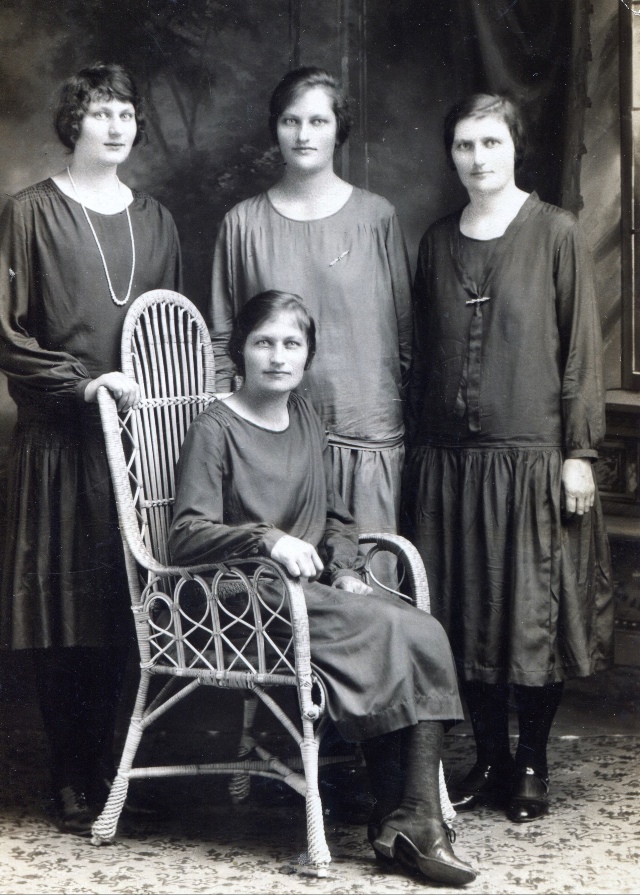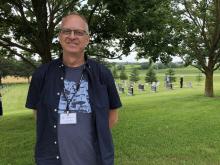What about the women? That’s what Carl Neustaedter wondered as he thought about the migration of Mennonites from the Soviet Union to Canada 100 years ago.
In Neustaeder’s family, that meant four great aunts on his mother’s side who made the journey to Canada in 1925: Agnes Unruh, Frieda Unruh, Margaret (Gredel) Unruh and Elizabeth (Liese) Unruh.

When they arrived in Canada as teens with their parents and three brothers, they immediately got to work to help the family get established and to pay off the Reiseschuld—the travel debt owed to the Canadian Pacific Railway.
They ended up doing things like working as domestics, in a sewing factory, nursing and dressmaking. One earned her nursing degree at age 29 after the migration interrupted her education. Only one of them married, and then later in life.
Neustaedter, 56, wishes he knew more about what those women—who have all passed away—thought and felt about their journey and arrival in a new country as new immigrants. The “hidden things that don’t get into the official histories,” as he put it.
What he does know about the migration story is mostly about what happened to the men. “The official stories are mostly told from their perspective and about them,” he said. “There is less about what the women experienced.”
His four great aunts grew up to become “strong, independent women,” who “stood on their own,” he said, noting one started her own business and another was in charge of nurses at Concordia Hospital in Winnipeg.
Even though they didn’t have the same high-profile jobs as their brothers, “they had no less influence on the success of the family, and were often its glue,” Neustaedter said. “Their strength and humour continue to inspire the women who came after.”
But of their migration story he knows little, except “they went through a lot to get here, and then had to go to work right away to support the family.”
Aileen Friesen isn’t surprised. “Women’s stories from this time have been neglected,” she said. “What we know is often about the men.”
This needs correcting, she believes.
“We need to listen to their voices, which are present in their diaries and letters,” said Friesen, who is co-director and associate professor with the Centre for Transnational Mennonite Studies at the University of Winnipeg and part of the “Memories of Migration” organizing committee.
“Mennonite women were well educated. They wrote many letters and diaries that are preserved in archives. But those voices are missing in the official narratives,” she said.
For her, it’s time for scholars and researchers to “reframe” the questions they ask about that migration.
“If it is framed differently through the lens of women’s experiences, we can get a whole different perspective,” she shared.
As for Neustaedter, who lives in Ottawa but grew up in Winnipeg, participating in the first leg of the “Memories of Migration” tour prompted him to reach out to relatives to ask for more information about his great aunts’ experiences of coming to Canada almost 100 years ago.
“I’m looking forward to learning more about them,” he said.
John Longhurst is a freelance writer from Winnipeg who is blogging about the first and third legs of the tour.
Read John's previous posts about the tour:
MoM 100: GRanDMA volunteer connects with others
MoM 100: Young people will carry the stories
MoM 100: Tour’s first leg comes to an end
MoM 100: Memory of travel debt lingers for participant
MoM 100: ‘The Place of Memory’ premieres



Add new comment
Canadian Mennonite invites comments and encourages constructive discussion about our content. Actual full names (first and last) are required. Comments are moderated and may be edited. They will not appear online until approved and will be posted during business hours. Some comments may be reproduced in print.